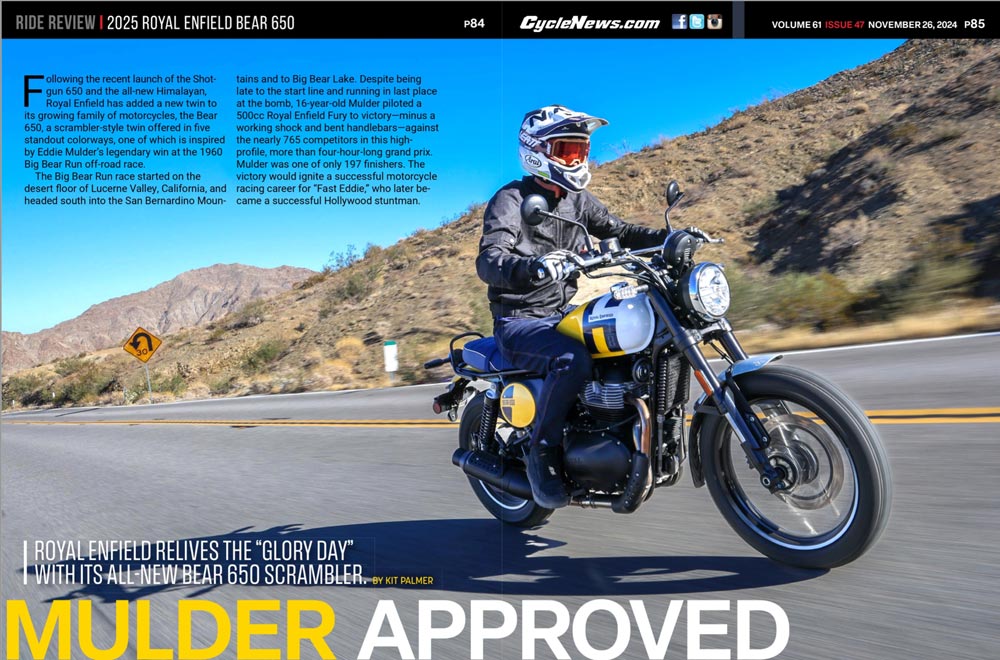Kit Palmer | November 27, 2024
Following the recent launch of the Shotgun 650 and the all-new Himalayan, Royal Enfield has added a new twin to its growing family of motorcycles, the Bear 650, a scrambler-style twin offered in five standout colorways, one of which is inspired by Eddie Mulder’s legendary win at the 1960 Big Bear Run off-road race.
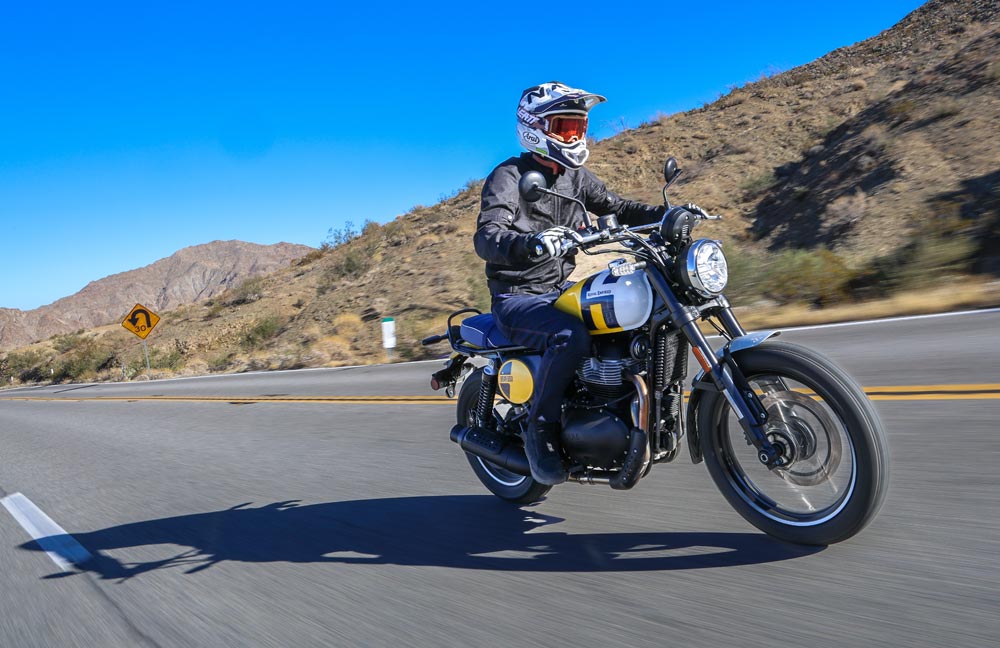
The Big Bear Run race started on the desert floor of Lucerne Valley, California, and headed south into the San Bernardino Mountains and to Big Bear Lake. Despite being late to the start line and running in last place at the bomb, 16-year-old Mulder piloted a 500cc Royal Enfield Fury to victory—minus a working shock and bent handlebars—against the nearly 765 competitors in this high-profile, more than four-hour-long grand prix. Mulder was one of only 197 finishers. The victory would ignite a successful motorcycle racing career for “Fast Eddie,” who later became a successful Hollywood stuntman.
Royal Enfield describes the Bear 650 as a “stylish new scrambler with a ‘60s soul” and inspired by Mulder’s historic win.
“We’ve always drawn deep inspiration for our motorcycles from our community and from our riders who’ve achieved extraordinary feats,” says Royal Enfield CEO, B Govindarajan. “Our inspiration for the Bear 650 came from one such legendary story—Eddie and that of the 1960 Big Bear Run.”
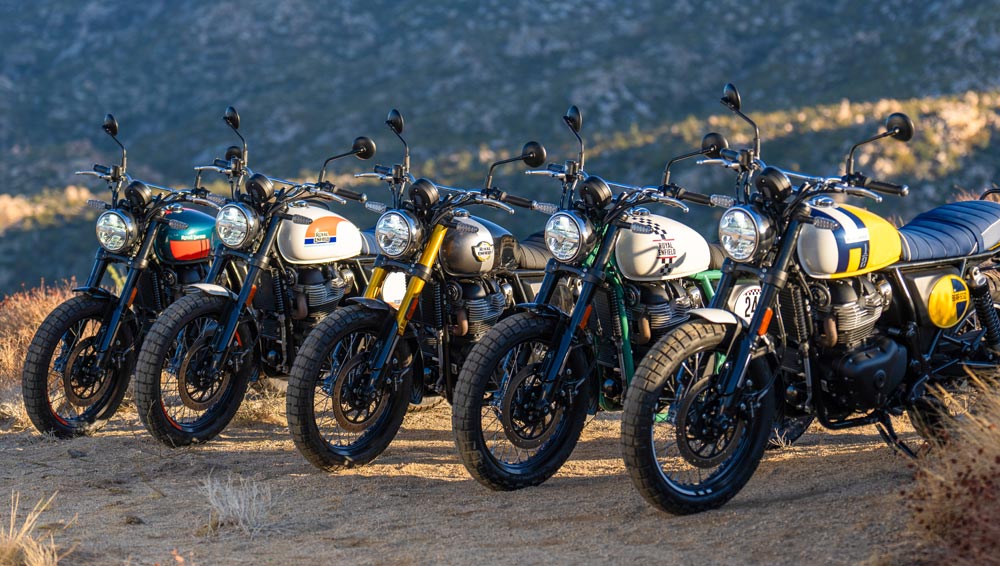 The new Royal Enfield Bear 650 is offered in five distinctive colorways, all of which look great.
The new Royal Enfield Bear 650 is offered in five distinctive colorways, all of which look great.
The Bear 650
The Bear 650’s fundamentals are derived from Royal Enfield’s INT model, known as Interceptor everywhere else in the world, unveiled in 2018. It shares the same chassis, engine, 3.6-gallon fuel tank, and braking foundation as the INT. However, the tubular steel double-cradle frame has undergone reinforcements at the steering head and subframe to support a taller, inverted fork and improve the bike’s load-carrying capacity.
The 648cc, eight-valve SOHC parallel-twin engine is identical to the Interceptor’s but tuned for maximum torque. Thanks to a new free-flowing, two-into-one exhaust system, Royal Enfield says the Bear 650 delivers an eight percent increase in torque to 41.7 lb-ft at 5150 rpm. Peak horsepower remains the same as the INT at a modest 47 hp, distributed to the rear wheel via a six-speed transmission.
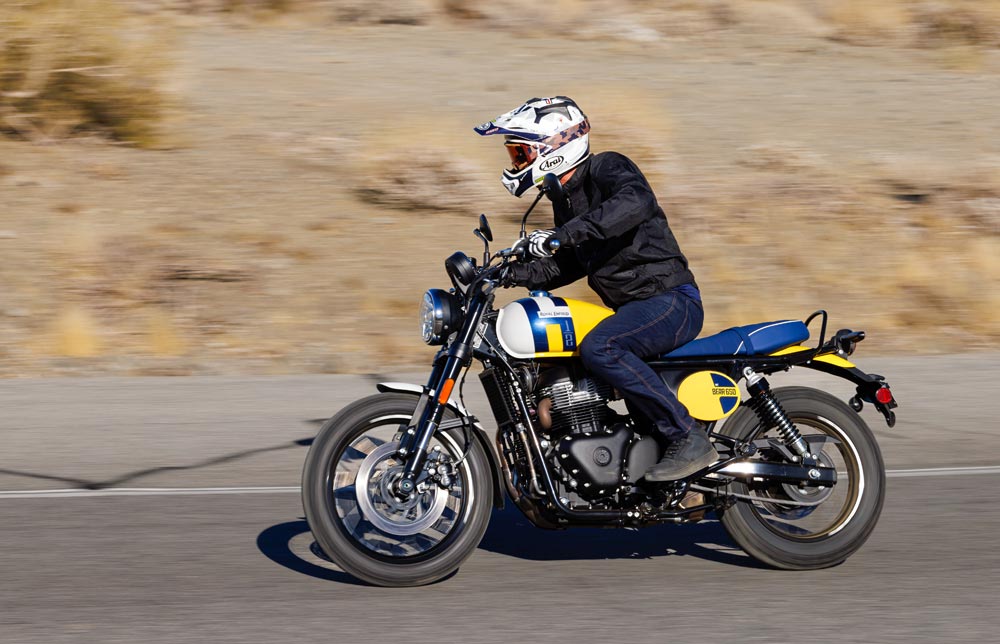 Not only is the Bear 650 a looker it also performs well in the city and in the wild.
Not only is the Bear 650 a looker it also performs well in the city and in the wild.
The Bear 650 embodies the scrambler look with its longer suspension, semi-knobby tires, and 1960s styling. Royal Enfield opted for a downpipe layout, similar to the Triumph Scrambler 400 X and Ducati Scramblers, rather than an up-pipe design like Triumph’s Scrambler 900 and 1200. Royal Enfield went the low route to reduce heat for the rider and facilitate luggage fitment.
The Bear 650’s upscaled 43mm inverted Showa big-piston fork has 5.1 inches of travel, while the twin rear shocks offer 4.5 inches with five preload settings. Neither suspension is adjustable, except for rear preload. Royal Enfield says the Bear weighs in at 476 pounds, which isn’t exactly light for a midsize standard motorcycle. It rolls on a 19-inch front wheel and 17-inch rear, with spoked alloy rims equipped with specially designed MRF Nylorex-X tires, which look suspiciously similar to Pirelli’s Scorpion Rally tires.
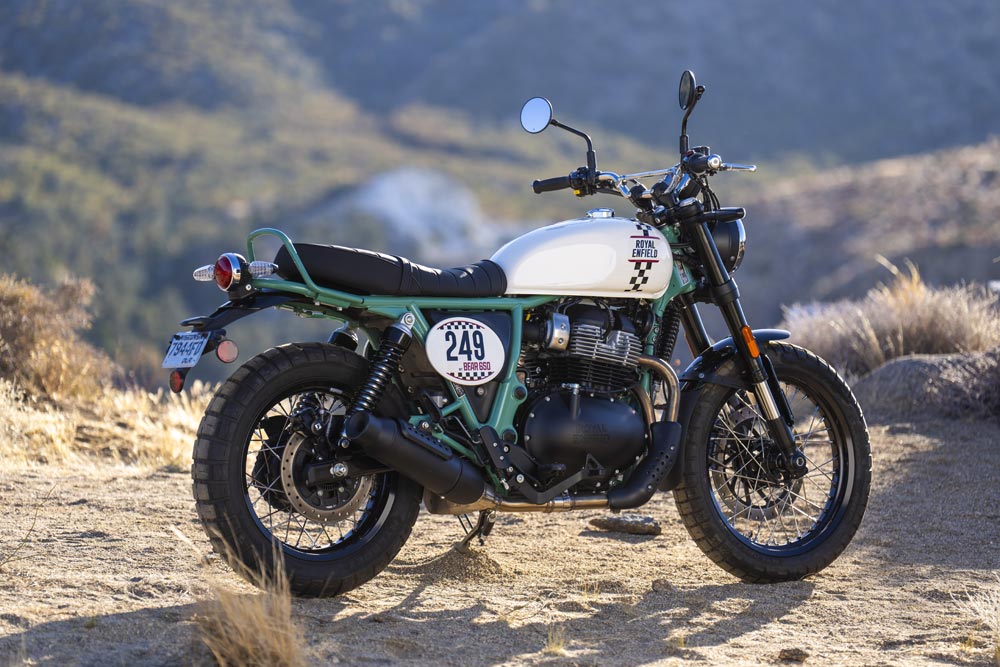 The special Two Four Nine Edition bears the same number 16-year-old Eddie Mulder wore when he won the Big Bear Run in 1960 on a Royal Enfield Fury.
The special Two Four Nine Edition bears the same number 16-year-old Eddie Mulder wore when he won the Big Bear Run in 1960 on a Royal Enfield Fury.
The Bear features several technologies that Mulder’s bike certainly didn’t have in 1960, like all-around LED lighting (a first for as RE motorcycle), a USB-C socket, dual-channel ABS-enhanced functionality and a TFT display pod that offers wireless smartphone connectivity compatible with Google Maps.
Royal Enfield gives you five distinctive color variations from which to choose, including a special Two Four Nine edition honoring Mulder and his Big Bear Run win. This special version features Mulder’s number 249, which he wore that day.
Like all Royal Enfield motorcycles, the Bear 650 is budget friendly. Depending on paint, MSRP starts at $6849 and tops out at $7199 for the 249 Edition. And you also get a remarkable three-year unlimited mileage warranty.
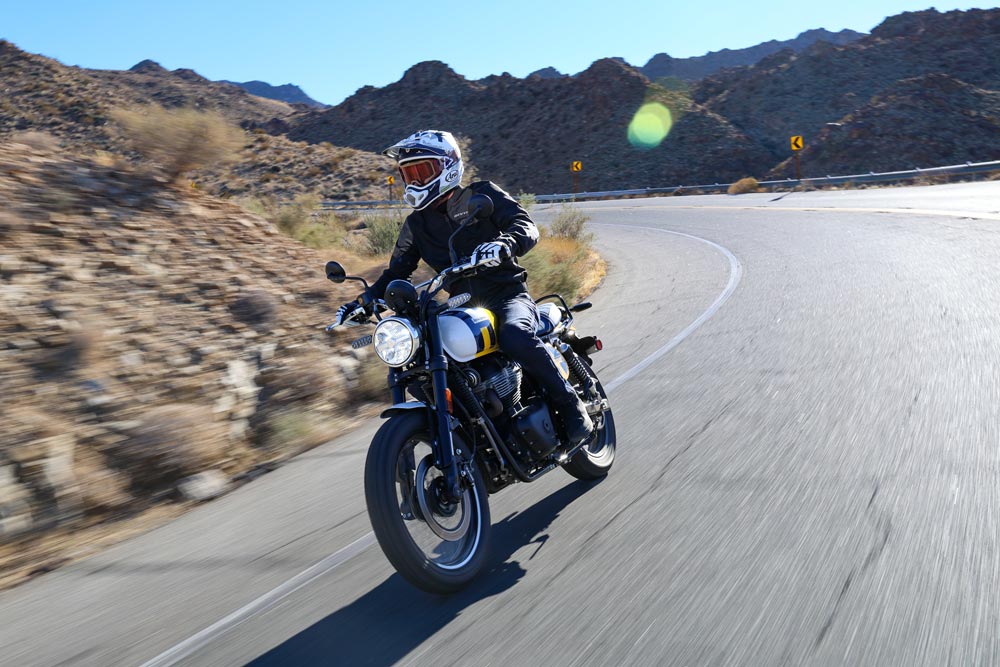
Scrambling Around
Royal Enfield chose the North American market to launch the Bear 650 globally. Their original plan was to have journalists from around the world experience the Bear 650 for the first time near where Mulder rode his Royal Enfield to victory more than 60 years ago: Big Bear Lake. But a massive wildfire nearby nixed that idea, so, at the last moment, the launch was delayed a week and was shuffled 40 miles south to Rancho Mirage, California, just east of Palm Springs. Eh, close enough.
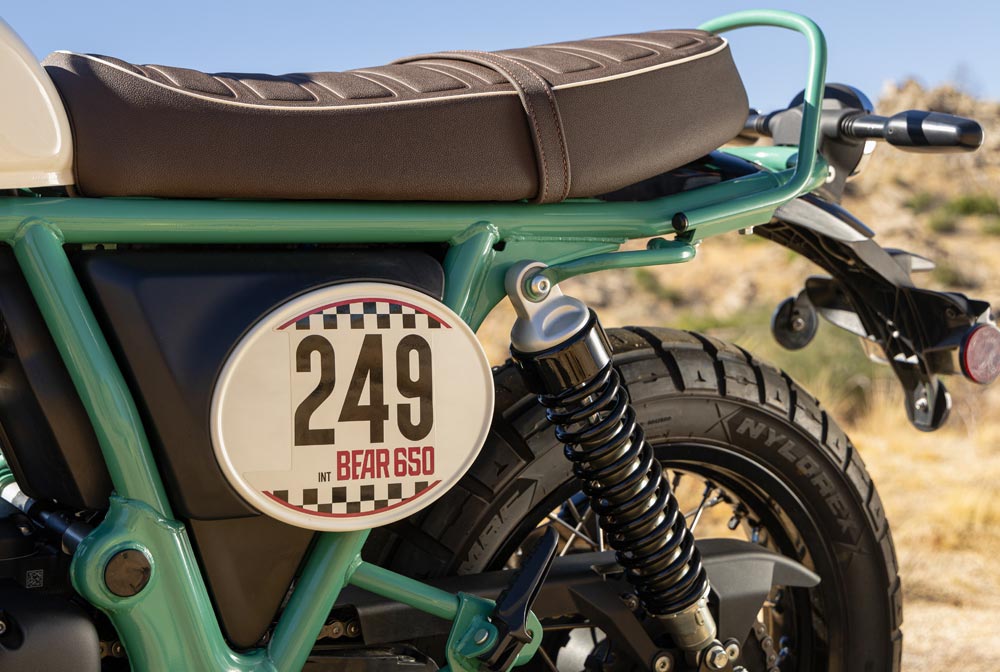 The Bear’s seat is more comfortable than it looks. The same cannot be said for the stiff shocks, at least for our tester’s 165 pounds.
The Bear’s seat is more comfortable than it looks. The same cannot be said for the stiff shocks, at least for our tester’s 165 pounds.
Royal Enfield gave us one day and 170 miles to experience the new Bear 650; approximately 168 miles were on the pavement, mostly twisty. Although Mulder’s Big Bear Run win happened on the dirt and in choking dust, Royal Enfield acknowledged that the Bear 650 is actually a street bike, not a dirt bike. But they clarified that it is capable of some light-duty off-road riding—i.e., well-maintained dirt roads—when the urge strikes. I’d later agree.
As Royal Enfield says, the Bear 650 is a full-on street machine and a very nice one. Comfort and ease of control are some of the Bear’s standout performance features. A semi-low seat height, relaxed ergos and an ultra user-friendly motor make the Bear 650 a joy to ride. The long and square-ish one-piece seat is much more comfortable than it looks.
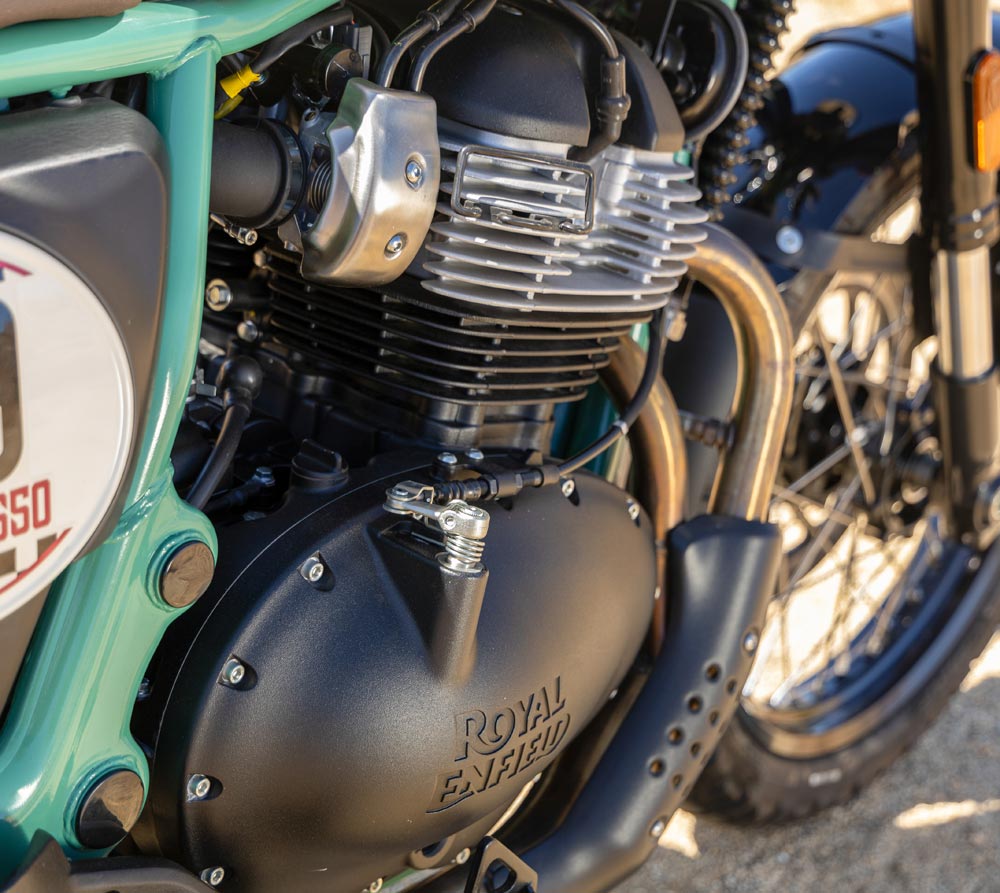 We love the Bear 650’s unique and retro-looking air-cooled motor.
We love the Bear 650’s unique and retro-looking air-cooled motor.
Making things even nicer at the helm, the Bear 650 features a good-looking four-inch circular TFT Tripper Dash display, enhancing the bike’s minimalist retro style while providing GPS and smartphone connectivity. The main screen displays an analog-style tachometer and all the usual essential info like fuel range. A joystick on the left switchgear intuitively adjusts settings. Off-road mode disables rear dual-channel ABS and lowers front wheel intervention. That’s about it when it comes to mode offerings. The dash can display turn-by-turn navigation, which I did not get the chance to utilize.
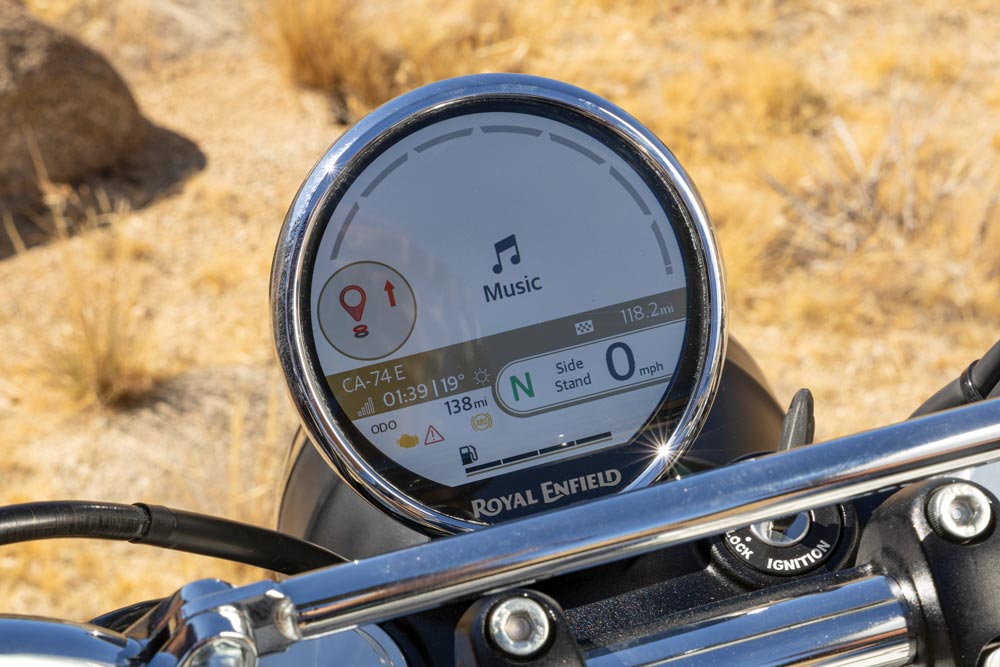 The simple and small instrument pod looks old-school but packs a punch.
The simple and small instrument pod looks old-school but packs a punch.
A portion of our ride took place on the open road, where the Bear 650 could run freely. It has no problem keeping up with traffic flow, often 70 mph and higher in California outside the big cities. Not an issue for the Bear. In spite of its asymmetrical 270° firing crankshaft, the engine is very smooth and nearly free of vibration at any revs. (It sounds nice, too, even for a parallel twin.) Acceleration starts to sign off as you approach 7000 rpm, but you don’t want to get close to that anyway when banging through the Bear’s six gears. Your best bet is to shift early and often and take advantage of the Bear’s meaty torque. It might have “only” 47 horsepower on tap, but don’t worry; it still moves along nicely. It’s surprisingly spunky.
Speaking of shifting, the Bear does that well, too. Smooth gear changes are easily accomplished, and the clutch pull is light and with excellent feel.
As good as the Bear is on the open road, it is even better on the twisties, especially when ridden at a relaxed but spirited pace—somewhere right in between is ideal. The bike feels light on the controls and takes little coercing to set up for the corners. Once committed, it tends to stay put.
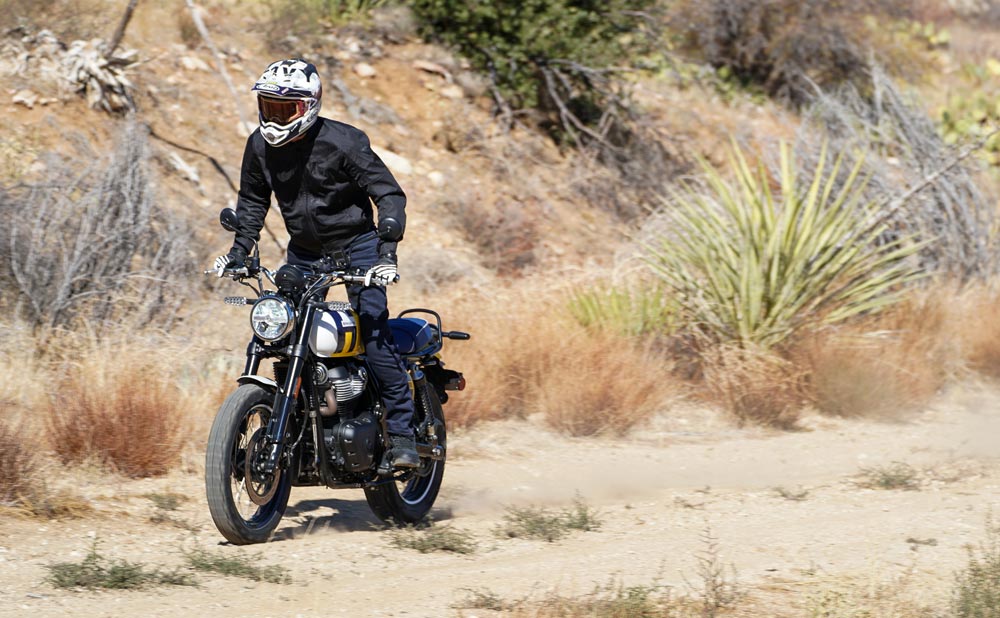 When it comes to the dirt, the Bear 650 probably performs about as well as Mulder’s 1960 Big Bear Run-winning Royal Enfield. The Bear is essentially a street bike capable of light-duty off-road riding.
When it comes to the dirt, the Bear 650 probably performs about as well as Mulder’s 1960 Big Bear Run-winning Royal Enfield. The Bear is essentially a street bike capable of light-duty off-road riding.
Suspension mars what otherwise is an excellent riding motorcycle. The dual shocks are sprung too tightly for my 165 pounds (before gear). I didn’t think much of it initially, but I subconsciously started wishing for more cushion after an hour or so. I needed a change, but I was out of luck. The shocks’ preload was already set at the softest position, which tells me the Royal Enfield folks probably know the springs are too stiff, too. Royal Enfield said the bikes are prepared to carry a passenger and cargo; I say, prepare for a single rider first and worry about the passenger and cargo later. I realize I’m a little on the light side, but I heard heavier riders than me mention the same thing. “A little on the stiff side.” On the other hand, I had no real issue with the non-adjustable fork; it felt fine.
Rear suspension aside, the Bear 650 does everything very well on the road. The ByBre brake system does the trick for spunky backroad jaunts and around-town riding, and it’s nice being able to easily disengage the rear ABS when the pavement turns to dirt. However, the Bear 650 has its limitations off the tarmac. Very little time was spent on the dirt on our ride, but you can easily and quickly tell that it won’t take much to reach the fork and shocks’ limits. Despite the stiff suspension, I still found the bike easy to bottom because of its 476 pounds and the lack of wheel travel. Otherwise, the bike’s low seat height, good handling and smooth power delivery will work fine for casual sight-seeing excursions on, in Royal Enfield’s words, broken roads or graded trails.
 Mulder attended the global unveiling of the new Bear 650 in Rancho Mirage, California, which included the Two Four Nine special edition version created in his honor. He was obviously moved and very proud.
Mulder attended the global unveiling of the new Bear 650 in Rancho Mirage, California, which included the Two Four Nine special edition version created in his honor. He was obviously moved and very proud.
Day Is Done
I must say that Royal Enfield has impressed me again with its latest addition. The Bear 650 is a fine motorcycle that performs well, is solidly built, offers plenty of nice tidbits, and, perhaps best of all, looks great with several eye-pleasing colorways from which to choose. I suspect anyone in the market for a scrambles-style motorcycle such as the Bear 650 is more concerned about how it looks than how it rips through back canyon roads and accelerates from stoplight to stoplight (though the Bear 650 does these things well), but they also don’t want a…well, a p.o.s. If the Bear 650 checks off the styling box for you and can happily see yourself at the Bear’s controls, you’re in good shape because it is a very good motorcycle, and not just because of its budget-friendly price but because it’s a very good motorcycle that happens to have a budget-friendly price tag.CN
VIDEO | Royal Enfield Bear 650 First Ride
Ride Wear
Helmet: Arai VX-Pro4
Goggles: Leatt Velocity 6.5
Jacket: REV’IT! Eclipse 2
Pants: REV’IT! Jeans Reed SF
Shoes: REV’IT! Jefferson
Gloves: REV’IT! Redhill
Back Protector: REV’IT! Seesoft Air
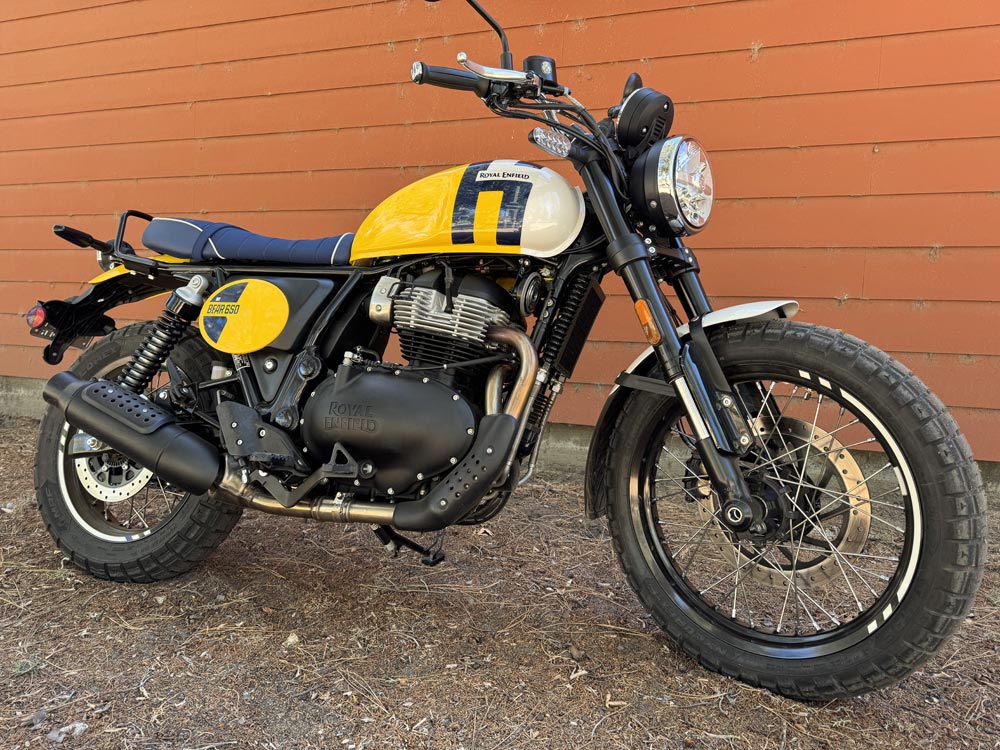
2025 Royal Enfield Bear 650 Specifications
| MSRP |
$6849-$7199 |
| Engine Type |
270º, parallel-twin, 4-stroke |
| Valvetrain |
SOHC, 8-valve |
| Bore x Stroke |
78mm x 67.8mm |
| Displacement |
648cc |
| Cooling system |
Air/oil |
| Lubrication system |
Dry sump |
| Horsepower (claimed) |
47 hp at 7150 rpm |
| Torque (claimed) |
42 lb-ft at 5150 rpm |
| Compression Ratio |
9.5:1 |
| Fuel System |
Multipoint sequential Bosch EFI w/2 x 34mm Mikuni throttle bodies |
| Transmission |
6-speed w/gear primary drive |
| Clutch |
Multiplate slip-assist clutch |
| Frame |
Tubular steel double cradle |
| Front Suspension |
43mm Showa Big Piston inverted fork |
| Rear Suspension |
Steel Box-section dual-sided swingarm w/dual Showa shocks; 5-stage preload adjustment |
| Front-wheel travel |
5.1 in. |
| Rear-wheel travel |
4.5 in. |
| Front Wheel |
Spoked alloy rim 100/90-19 MRF Nylorex-F |
| Rear Wheel |
Spoked alloy rim 140/80R17 MRF Nylorex -X |
| Front Brakes |
1 x 320mm steel disc w/2-piston floating ByBre caliper and dual-channel Bosch ABS |
| Rear Brakes |
1 x 270mm steel disc with 1-piston floating ByBre caliper and dual-channel Bosch ABS |
| Wheelbase |
57.5 in. |
| Seat Height |
32.7 in. |
| Fuel Capacity |
3.2 gal. |
| Weight (wet, claimed) |
476 lbs. |
